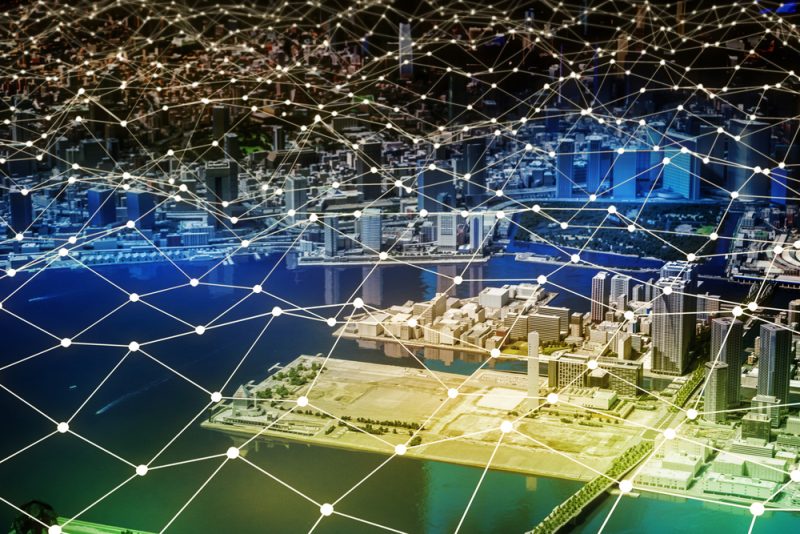Utilities, regulators should jointly improve nation’s electric grid, Aii says

Growing amounts of distributed energy resources (DER) and new energy technologies require America’s electric grid to become smarter, more distributed and vastly interconnected — all of which are costly and challenging, said Brigham McCown, chairman of the Alliance for Innovation and Infrastructure (Aii).
In a nutshell, upgrading the grid isn’t going to be cheap, McCown said during a press conference last week, although he didn’t speculate on the actual amount needed.
In fact, electric utilities and grid operators are forging ahead, making ongoing investments to modernize their systems and, along with other stakeholders, to invest in deploying DER and new technologies to realize the benefits of what a smarter grid offers, including improved efficiency, reliability and resiliency.
Nevertheless, it’s not enough, Aii says in its newly released policy analysis, Building a Smarter Electric Grid: How Investing in Smarter Electricity Infrastructure Will Energize America.
“Such development is uneven, and in aggregate may fall short of what is needed to fully realize the benefits of the ‘DER-ready’ smart grid,” the paper says.
McCown noted that public and private investment, along with cooperative improvements to protect reliable energy, need to be made by utilities and state and federal regulators working together.
The Aii analysis sets priorities for future investment that’s designed to help companies and governments smooth the transition to a more digitized grid and safely and efficiently integrate DER, energy storage, electric vehicles and other advanced energy technologies, including smart hardware, software and analytic capabilities.
Specifically, Aii recommends that state and federal regulators and utilities consider making investments in:
- Enhanced foundational infrastructure, which requires overhead and underground lines having conductors and cables with sufficient capacity to ensure power to and from a rising amount of DER.
- Advanced protection, distribution automation and advanced metering infrastructure (AMI), such as advanced sensors and reclosers, smart meters, distribution switches and modern voltage control, among others.
- High-speed communications infrastructure to ensure whatever data is collected in the field and whatever control decisions are made using that data get sent to utility control centers, distributed controllers and information systems and then back to the field in real-time.
- Advanced management systems and grid analytics — including for distribution, outage and DER management systems — will ensure that the collected data from the field is used to make intelligent control decisions aimed at optimizing real-time system performance.
- Distributed energy storage (DES) that helps manage reliability issues resulting from the integration of increasing distributed generation into distribution grids.
“These investments and modifications will enable further adoption of customer or utility-owned DER without sacrificing safety or reliability,” according to Aii.
Aii also noted that unless suitable mitigation measures are implemented, each newly integrated technology component (i.e. advanced sensors, distribution automation devices, DER, etc.) may represent a cybersecurity threat for utility systems “because they will eventually be deeply connected with operations technology, information technology and business intelligence and grid analytics systems.”
And such mitigation measures also require more investments in IT, as well as additional work in standards and regulations to ensure compliance by utility distribution systems, new products and emerging technologies, Aii says.
“When cybersecurity is of utmost importance, shoring-up the grid is critical for the security of all Americans,” McCown said last week in a statement.
People have choices
The main drivers behind what Aii sees as being these much-needed, public-private investments are electricity consumers.
Not only have improved technologies and lower prices, along with state and federal tax incentives, grants and mandates put “downward pressure on the installed cost of residential solar and other DER technologies,” according to the Aii paper, they’ve also led consumers to rethink their choices, whether their reasons may be based on helping the environment or saving money.
“But, increasingly, there’s another trend driving consumer interest in [DER] and related products — changing expectations about how they interact with all services across industry sectors. Platforms like Uber, Netflix, and Airbnb, gave consumers significantly greater control over the products and services they consume. Some consumers have carried these expectations into the energy sector, calling for greater control over their energy use and what they pay for it,” according to the Aii paper.
“From rooftop solar, residential energy storage, microgrids, net zero homes, community solar, and smart appliances, a literal ‘power to the people’ mentality is beginning to take shape among electricity consumers,” Aii says.
Aii is comprised of two non-profit organizations, the National Infrastructure Safety Foundation and the Public Institute for Facility Safety, which together focus on non-partisan policy issues.
